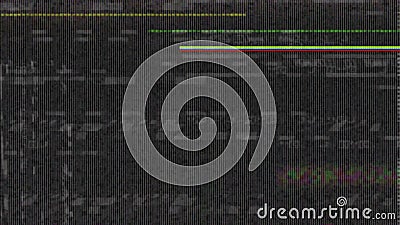

In some cases, middle cerebral artery vascular syndromes are accompanied by a contralateral visual deficit.

Middle cerebral artery vascular syndromes entail contralateral weakness and sensory changes and more commonly involve the face and arm than the leg. Occlusion of the anterior cerebral artery brings contralateral weakness, possibly personality changes such as disinhibition or lack of motivation, and sensory changes that more often affect the leg than the face or arm. In the anterior circulation, vascular syndromes involving the internal carotid artery are characterized by the ipsilateral monocular temporary vision loss known as amaurosis fugax, which may be accompanied by contralateral weakness or sensory changes.

Vascular Pathways Entail Specific Symptoms Next, neurologists determine whether the symptoms follow a characteristic vascular pathway indicative of which brain artery is likely involved. The second is the symptoms’ temporal onset. The first issue that neurologists would consider, she said, is whether the symptoms are focal or diffuse. Stroke is an episode with such evidence,” she explained.įor primary care physicians, cardiologists, and emergency physicians to quickly distinguish TIA or stroke from their mimics, they must learn to think like neurologists, according to Dr. “The trend now is to move away from an arbitrary time cutoff and define TIA physiologically as an episode of neurologic dysfunction caused by focal brain, spinal cord, or retinal ischemia without evidence of acute infarction on imaging studies. The widespread availability of effective t-PA therapy for acute ischemic stroke and the recognition that “time is brain” when it comes to reperfusion have since made stroke specialists reluctant to time symptom duration. According to the old definitions, symptoms in a vascular distribution pattern that lasted for less than one hour indicated a TIA longer-lasting symptoms indicated stroke. The distinction between TIA and stroke has changed, said Dr. In contrast to the experience of a patient with partial seizures, patients with TIA or stroke usually experience predominantly negative phenomena such as loss of vision (rather than seeing bursts of flashing lights), loss of speech, loss of motor function, or loss of sensation.Ī Revised Distinction Between TIA and Stroke Positive phenomena such as strange odors, ictal fear, the sensation of déjà vu or jamais vu, and automatic behaviors such as lip smacking or repetitive hand movements are common symptoms of complex partial seizures. Partial seizures can be subdivided into complex partial seizures, which are associated with an altered level or loss of consciousness, and simple partial seizures, which do not include such features.Ī patient experiencing a complex partial seizure will often stare into space. Symptoms of Partial Seizures Include Positive Phenomena Thus, a patient who presents with what looks like complicated migraine but no history of migraine is much more likely to have TIA or stroke. It is rare for a patient’s first-ever migraine episode to involve complicated migraine. Complicated migraine is often accompanied by classic migraine symptoms, including nausea, photophobia, and visual aura phenomena such as scintillating scotoma or kaleidoscope vision. Hickenbottom.Ĭomplicated migraine entails focal neurologic symptoms, such as weakness, tingling, or numbness on one side of the body, that can precede, accompany, or follow the headache. Typically with TIA or stroke, the patient has symptoms ,” said Dr. “The symptoms might start in, say, the hand, then over several minutes move up the arm and then to the face. In contrast, the symptoms of complicated migraine or partial seizures often evolve in what neurologists call “the Jacksonian march,” which starts in one part of the body and gradually spreads. Symptoms of TIA or stroke typically start within seconds or minutes of onset and do not progress further. The timing of symptom onset provides important information. Symptoms of Complicated Migraine Progress Over Time “Almost always, the vascular pathways are respected, as opposed to random patterns of symptoms that don’t really respect a vascular pathway.” Joseph Mercy Health System in Saline, Michigan. Hickenbottom, MD, Medical Director of the Stroke Program at St. “Specific clinical presentations go along with stroke and TIA,” said Susan L.

HONOLULU-Clinical history is the key to distinguishing between transient ischemic attacks (TIAs) and strokes on one hand and their main mimics-including partial seizures and complicated migraine-on the other hand, according to research presented at the 2013 International Stroke Conference.


 0 kommentar(er)
0 kommentar(er)
